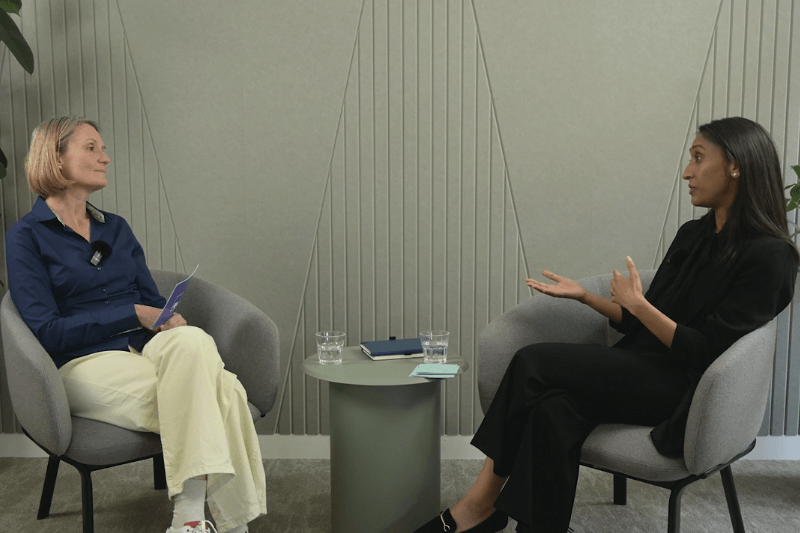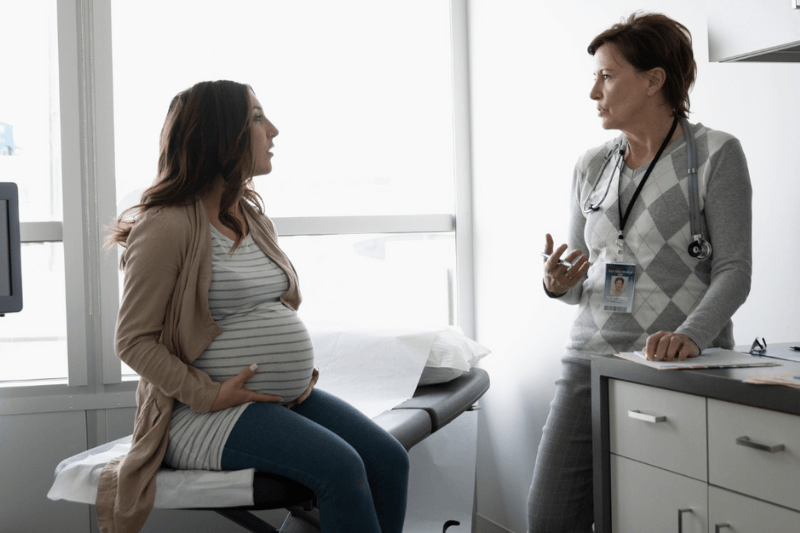Affecting around 1.5 million women and those assigned female at birth in the UK,1 endometriosis is a long-term condition where cells, similar to the lining of the womb, start to grow in other areas of the body, such as the ovaries and fallopian tubes.
It can affect women of any age, and due to the symptoms being the same as many other conditions, and in the case of very heavy periods and painful periods which in some cases is viewed as “normal”, it can take some time to be fully diagnosed.
According to Endometriosis UK it takes on average 7.5 years between women first seeing a doctor about their symptoms and receiving a firm diagnosis.2
We take a look at what the symptoms are, what treatments are available and share some of the real-life questions sent to our health professionals.
What are the symptoms of endometriosis?
There are numerous symptoms for endometriosis and the intensity can vary for different women, however the common symptoms are:
- Heavy, or irregular periods
- Pelvic or back pain that is usually worse during your period but can last for up to 3 out of 4 weeks a month, worsening at the time of your period
- Severe period pains that can make it difficult to continue your usual daily activities
- Pain during or after sex
- Difficulties with conceiving
- Painful bowel movements or passing urine during your period
- Bladder pain and/or more frequent urinary infections, if endometriosis is affecting the bladder
- Nausea or changes to bowel motions while on your period
- Fatigue.
These symptoms can have a big impact on a women's quality of life, with some finding that this can lead to symptoms of depression.
>Explore more about adenomyosis – a condition where endometrial tissue grows in the uterine muscle, compared to endometriosis where it grows outside of the uterus.
How is it different from period pain?
Period pain is common for lots of women during their menstrual cycle, however in endometriosis the pain is usually more severe. Period pain itself is caused by the walls of the womb contracting, and during a period the walls start to contract more vigorously.
When the wall of the womb contracts, it compresses the blood vessels lining your womb. This temporarily cuts off the blood supply – and oxygen supply – to your womb. Without oxygen, the tissues in your womb release chemicals that trigger pain.3
In endometriosis the pain is caused by tissue that has grown outside the uterus. It is during a period that these endometrial cells break down and bleed, however, this internal bleeding has no way of leaving the body which results in inflammation, intense pain and a build-up of scar tissue.
It also commonly results in cyst formation known as chocolate cysts. This is a build-up of old blood as a result of the cells bleeding into the area locally; and is found on imaging and laparoscopy examination. The cysts can sit anywhere within the pelvis where the cells have formed, with the ovaries being a common location.
How is endometriosis diagnosed?
As the symptoms can be similar to other conditions, it can be difficult to get diagnosed. However, the most conclusive way of getting a diagnosis is through a laparoscopy – this is where a flexible scope with a camera is inserted via a small incision around the pelvic belly button area. The surgeon will then be looking for any signs of the endometriosis.
Scans, blood tests and internal examinations are not a definitive way to diagnose endometriosis.
Treatment for endometriosis
There is currently no cure for endometriosis, however there are ways to help reduce the symptoms and ease the pain of the condition.
Every woman should have their options discussed with them, as the severity of the condition, age, and also the severity of the symptoms are all factors.
There are 3 main treatment options that may be offered:
Pain relief
Anti-inflammatories (NSAIDs), such as ibuprofen or paracetamol, may be tried to see if they help reduce your pain. They can be used together for more severe pain.
In addition, anti-inflammatory painkillers like mefenamic acid, can help to relieve the worst of the menstrual cramping and pain caused by the excessive release of prostaglandins thought to be present in endometriosis.
The bowel itself can sometimes be affected by endometriosis tissue, and even if it is not directly affected, because the bowel sits so close to other affected organs, endometriosis can cause changes in our bowel habits.
TENS machines can also help, as the electrical pulses block the pain messages and instead help to produce the feel-good hormones, endorphins.
Hormone treatment
As endometriosis responds and grows when exposed to oestrogen, there are a number of hormone treatments that attempt to block or reduce the production of oestrogen in the body.
This means the endometriosis will be unable to continue growing and helps to relieve symptoms.4
Hormone treatment options include:
- Combined oral contraceptive pill
- Mirena coil
- Progestogens
- GnRH analogues
- Testosterone derivatives
- Danazol
- Gestrinone (Dimetriose).
Evidence suggests that while these hormone treatments are equally as effective in treating endometriosis, they will likely have different potential side effects, so the best hormone treatment options will vary from person-to-person.
Surgery
Surgery may be offered to remove all the patches of the endometriosis tissue or to remove areas of endometriosis affecting nearby structures such as the bowel, bladder and the ovaries, if possible.
Usually, the aim is to be minimally invasive with the use of laser or diathermy for example, however, in some cases such as chocolate cysts being present, surgery is performed to remove these (NB organs are not removed).
In some cases, it may be appropriate to perform a hysterectomy, however this does not necessarily resolve endometriosis and is far less commonly used these days, although in some cases it is needed.
Does endometriosis affect fertility?
Endometriosis UK highlight "the prevalence of endometriosis in women with infertility is as high as 30–50%”5, however there is no established link between the condition and infertility.
It’s advised that with increasing severity of endometriosis, scar tissue (adhesions) becomes more likely and this decreases the chances of natural conception. This is due to there being more adhesions that can trap the egg and prevent it from travelling easily down the fallopian tube.
That said, even with a severe case, getting pregnant is still possible.
Guidance from our health professionals
Our professionals provide information and support on any health issues or concerns our members may have. Here is a selection of questions and answers relating to topics covered in this article, that you might find useful:
Question: I have had painful periods for the last two decades and not sure what to do...
I have had NHS ultrasound scans which are normal. I do not have fibroids. I’m not sure what the next step is? I would be grateful to have expert advice as I am concerned this could be affecting my fertility.
Answer:
While ultrasound scanning can be a guide, usually the only way to check for and find if endometriosis is present is via a laparoscopy. This is where a small thin scope is passed through the belly button area, enabling a gynaecologist to visualise any patches that are present and treat at the same time if possible.
It is considered the gold standard approach to diagnosing endometriosis. If a scan is performed during the first few weeks of the cycle, for example, there may only be a few patches present that are not visible or active at that time, and this is one of the reasons why laparoscopy is used.
It is also possible to have only a few areas of endometriosis but if they are sitting on a nerve they can give rise to very acute pain during menstruation and at other times as well, in some cases.
For this reason, if you would like this to be looked at in more detail then I think it would be sensible for you to have a chat with your GP. Explain that your problems are persisting and ask for a referral to see a gynaecologist
Question: I've been to the doctor several times myself for extremely heavy periods...
They have tried several things including scans for fibroids, but they can’t find a cause or seem to offer anything to help.
What can I do? 2-3 days of the month, I can’t really leave the house because the flow is not controllable at all.
This has been a side effect of the emergency C-section that I had in March 2018. The doctor first asked me to wait a year for my body to sort itself out - but it’s been much longer than that now and its affecting everything.
Answer:
Following childbirth it can take some months for the hormones to return to your pre-pregnancy state. The resuming of your usual menstrual cycles can also be delayed if you are or have been breast-feeding your baby.
This is because raised prolactin hormones levels in your body can prevent eggs from maturing, becoming fertile and being released on a regular basis.
That said, I would suggest that the cause for your heavy bleeding should be investigated further as this could be due to the presence of endometriosis, particularly if there are adhesions linked to the scar tissue from the caesarean section wound.
Other possible causes for heavy bleeding may be due to the presence of infection or even fibroids.
I appreciate that you have had scans to see if there were fibroids, but I do think you would probably benefit from speaking to your GP and asking for a referral to a gynaecologist in order to ascertain what other possible causes could be and whether other investigations are required.
Further scans of your pelvic organs may also be useful to exclude endometriosis, adhesions and fibroids.
Next steps
If you are currently experiencing any of the issues covered here, please speak to your GP to see if they can help ease your discomfort and, importantly, find our exactly what’s causing your symptoms.
References
- Understanding Endometriosis - Endometriosis UK
- Getting diagnosed with endometriosis - Endometriosis UK
- Period pain - NHS
- Hormone treatments for endometriosis - Endometriosis UK
- Endometriosis facts and figures - Endometriosis UK














